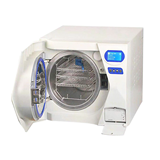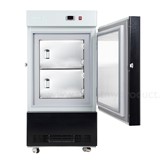Discover how to finance a cosmetic laser machine in Australia. Explore repayments, approval tips, and loan options for startups and established clinics.
Key Takeaways
- Loan amounts typically range $15,000–150,000, with average laser equipment financed between $15K–80K
- Approval time can be as fast as 24–72 hours for equipment under $50K (especially via specialists)
- Interest rates generally range from 6.95% to 14.5% p.a. depending on lender, credit, and business history
- Loan terms commonly span 12 to 60 months, with options including chattel mortgages, hire purchase, and operating leases
- Tax benefits: Full asset depreciation write-off (instant asset write-off under $20K), GST credits, and interest deductions are available
- Used equipment financing is available but requires detailed collateral evaluation; brokers can help secure funding and manage risk.
- Used equipment financing risks: limited warranty, unclear residual (balloon) payments, resale value concerns. Know the end-of-term buyout terms.
- ROI: With treatment billing between $250–600/session, equipment typically pays for itself within 6–18 months, depending on volume and pricing.
Introduction
Acquiring cosmetic laser machines in Australia often means investing $15K to 150K up-front. Financing is critical to conserving working capital, scaling services, and maximising tax efficiency. This guide walks you step-by-step through financing options for different price tiers, lender requirements, broker support, and pitfalls to avoid, so you can make an informed, strategic decision.
Common Finance Options for Cosmetic Laser Machines
- Chattel Mortgage (Business Loan for Equipment)
- You own the equipment from day one.
- Claim depreciation and interest as tax deductions.
- Suitable for mid-long term ownership goals
- Hire Purchase / Rent-to-Own
- Payments structured over 1–5 years; ownership transfers at term-end.
- Often includes a balloon/residual payment at end.
- Useful when ownership is budgeted but capital is limited.
- Operating Lease / Equipment Lease
- Use equipment while the financier retains ownership.
- Payments are fully tax-deductible.
- Flexible end-of-term: return, extend, or buy at residual price.
- Vendor or Manufacturer Finance
- Direct leasing or installment plans from suppliers (e.g. Dermatech, Ausmed).
- May include rolling contracts, low-doc options, early cancellation periods.
- Third-Party Equipment Finance Brokers & Non-bank Lenders
- Specialists such as Geared Finance, Finlease, ELS, and Berra Finance offer competitive terms and fast approval tailored to aesthetic clinics
Finance Scenarios by Equipment Price Tier
Tier 1: Entry-level lasers ($15,000–30,000)
- Best structure: Chattel mortgage or low-doc loan; leases are also possible.
- Approval timeframe: 24–72 hours if business trading >6 months
- Repayment options: 12–36 months with or without balloon payment.
- Tax benefit: If under $20K and instalment setup done by 30 June, qualify for instant asset write-off
Tier 2: Mid-range lasers ($30,000–70,000)
- Preferred structure: Hire purchase or lease-to-own.
- Repayment: 24–60 months with fixed installments; balloon/residual 10–20% if recovery is needed.
- Interest rates: Typically ~7%–12% p.a. based on credit and revenue
- Broker advantage: Access multiple providers, fast turnaround, negotiate residual terms.
Tier 3: Premium devices (>$70,000 up to 150K)
- Structure: Split vendor financing or chattel mortgage; sometimes lines of credit or equipment trust.
- Repayment term: Normally 36–60 months; residual/buyout at market value must be carefully reviewed.
- Documentation required: 12+ months trading, financials, credit history, ABN, GST registration.
- Risk: residual buyout ambiguity, higher depreciation; brokers or financiers should clarify end-of-term liabilities
What Finance Companies Look For: Key Approval Criteria
- Trading History: Most lenders require 6–12 months of operations and revenue support.
- Business Structure: ABN + GST registration evidence for tax deduction claims.
- Creditworthiness: Business and personal credit history; minimal overdrafts or bounced payments.
- Asset Resale Value: Laser machine models with strong residual value or high demand are considered safer collateral.
- Loan Purpose & Invoice: Proforma invoice from reputable TGA-compliant supplier (e.g. Dermatech, Lumenis, Ausmed).
How a Good Finance Broker Can Help
- Access to multiple lenders: Including specialist aesthetic equipment financiers.
- Bundled low-doc applications: Especially for new or growing clinics under $50K.
- Negotiating residual or balloon terms: Ensuring end-of-term cost is predictable and affordable.
- Advising structure: Recommend lease, hire purchase, or chattel mortgage based on goals.
- Faster approvals: Many brokers secure approval within 24 hours for standard requests
Financing Used Cosmetic Laser Equipment
What’s Possible:
- Lenders may finance used machines up to ~5 years old, provided condition and service history are documented.
- Used device financing rates are similar but may require additional valuation or higher deposit (10–20%).
What to Watch Out For:
- No or limited warranty: Many second-hand machines have expired warranties.
- Residual pricing confusion: Some rent-to-own agreements tie residual payment to market value rather than fixed sum, this risks unexpectedly high final costs.
- Asset worth vs. loan: Lenders expect the financed amount not to exceed residual/resale value; depreciation reduces borrowing margin.
Broker Support Advantage:
- Help evaluate supplier credibility.
- Review finance contracts for hidden fees or unfair terms.
- Clarify servicing/maintaining obligations post-finance.
Additional Finance Considerations & Tips
- Government incentives: Small businesses (<$10M turnover) can use instant asset write-off for assets under $20K (by 30 June 2025)
- GST and tax: You can claim input GST credits and deduct interest or lease payments. Consult your accountant.
- Insurance: Lenders often require business equipment insurance; factor in annual premiums.
- Early payoff: Confirm there are no penalties for early repayment with your lender.
- Upgrade flexibility: Some lease agreements allow device upgrades after a year, ask before signing.
Scenario-Based Examples
Scenario A: Small start-up clinic buying a $18K diode laser
- Loan type: Chattel mortgage or low-doc loan under $20K.
- Term: 24 months; weekly repayments.
- Approval: Within 2 days.
- Tax benefit: Instant deduction under $20K write-off.
Scenario B: Mid-size clinic financing a $55K fractional CO2 system
- Structure: Hire purchase with final 15% residual payment.
- Term: 48 months, fixed repayments.
- Broker negotiates lower balloon and includes supplier warranty.
Scenario C: Established practice financing a $110K multi-platform device
- Solution: Split vendor finance and chattel mortgage, 60-month term.
- Must supply past 12 months financials, bank statements, ABN, GST.
- Residual: Fixed sum (e.g. $20K) rather than market rate.
Example repayments for cosmetic laser machines
Cosmetic laser machines in Australia range widely in cost, from $20,000 to $100,000+. Based on common finance structures like chattel mortgages, here’s how repayments can look with a 5-year loan term at an 8.5% interest rate:
- $20,000 loan → approx. $410/month
- $40,000 loan → approx. $820/month
- $70,000 loan → approx. $1,430/month
- $100,000 loan → approx. $2,050/month
These estimates assume no deposit and average credit conditions. Your actual repayments may differ based on interest rate, loan structure, deposit, or business credit profile.
Financing: Startup vs. established clinic
Your clinic’s stage of business plays a major role in how easy it is to get finance approval. Lenders assess risk differently for new and established operators.
Startup clinics (under 12 months trading)
New businesses are considered higher risk due to the lack of financial history. Expect stricter conditions and more documentation.
Common lender requirements:
- Personal/director guarantee
- Strong personal credit rating
- 10–30% deposit or contribution
- Detailed business plan with projected income
Strategies to improve approval chances:
- Co-signing with a financially stronger individual
- Demonstrating relevant clinical or business experience
- Using a broker who works with startup-friendly lenders
Established clinics (12+ months trading)
If you’ve been operating for a year or more, your approval odds improve significantly—especially with healthy turnover and consistent cash flow.
Key advantages:
- Access to full funding (no deposit)
- More flexible loan structures (e.g. lease, chattel mortgage, or rental)
- Lower interest rates (often 6–9%)
- Quicker processing and reduced paperwork
Typical requirements:
- Recent BAS or financials
- Evidence of regular revenue
- Good business credit history
Bottom line: Startups can still access funding, but will need to offer more financial backing or documentation. Established clinics usually have more negotiating power and wider lender choice.
Let me know if you'd like:
- A separate section on GST benefits and tax treatment
- Help drafting a quick-reference sidebar
- A version formatted for LinkedIn or PDF download
FAQs: Financing Cosmetic Laser Machines in Australia
Q1: How long does finance approval take?
For equipment under $50K and existing customers, lenders often approve within 24–72 hours. Larger applications may require 3–5 business days.
Q2: Can I finance a used laser machine?
Yes, if it's under ~5 years old, TGA listed, and has documented maintenance. Some lenders finance up to 80% of its residual value. Brokers can help assess conditions and structure the deal.
Q3: Which loan type is best?
- Chattel mortgage: Own asset from day one, best for long-term value.
- Hire purchase: Good for ownership, allows balloon/residual structure.
- Operating lease: Ideal if flexibility matters or you may upgrade tech.
Q4: What interest rates can I expect?
Rates generally range from 6.95% to 14.5% p.a., depending on lender, business credit score, and loan structure.
Q5: Are there tax benefits?
Yes, equipment costs and interest are tax-deductible, and assets under $20K may qualify for immediate write-off, plus GST credits apply on purchase or lease payments.
Q6: What if I pay off the loan early?
Most brokers and lenders allow early repayment without penalty. Always confirm before entering the agreement.
Q7: What should I check in a lease-to-own contract?
Ensure the final balloon/residual payment is a fixed amount, not “market rate”; check for service inclusion and cancellation rights.
Final Thoughts
Financing a cosmetic laser machine in Australia offers clinics strategic advantages, spreading cost, preserving capital, maximising tax deductions, and accelerating professional growth. Whether you’re investing $15K in an entry-level diode laser or financing a premium multi-platform system, matching the correct structure (chattel mortgage, hire purchase, or lease) to your business goals matters. Use a knowledgeable finance broker, be clear on residual terms, and ensure TGA-compliant supplier invoices. With the right setup, you can be operating in days, tax-efficient in the next quarter, and financially ahead within a year.


-160x160-state_article-rel-cat.png)





















